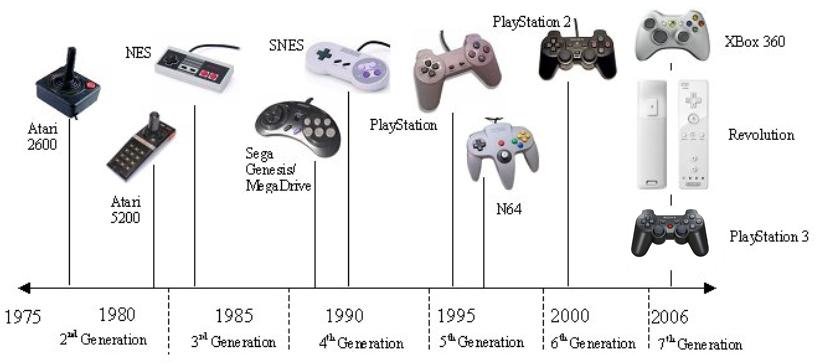First Gen
The first video games appeared in the 1960s. They were played on massive computers connected to vector displays, not analog televisions. Ralph H. Baer conceived the idea of a home video game in 1951. In the late 1960s, while working for Sanders Associates, Baer created a series of video game console designs. One of these designs, which gained the nickname of the 1966 "Brown Box", featured changeable game modes and was demonstrated to several TV manufacturers, ultimately leading to an agreement between Sanders Associates and Magnavox. In 1972, Magnavox released the Magnavox Odyssey, the first home video game console which could be connected to a TV set. Ralph Baer's initial design had called for a huge row of switches that would allow players to turn on and off certain components of the console (the Odyssey lacked a CPU) to create slightly different games like tennis, volleyball, hockey, and chase. Magnavox replaced the switch design with separate cartridges for each game. Although Baer had sketched up ideas for cartridges that could include new components for new games, the cartridges released by Magnavox all served the same function as the switches and allowed players to choose from the Odyssey's built-in games. The Odyssey initially sold about 100,000 units, making it moderately successful, and it was not until Atari's arcade game Pong popularized video games that the public began to take more notice of the emerging industry. By autumn 1975, Magnavox, bowing to the popularity of Pong, canceled the Odyssey and released a scaled-down version that played only Pong and hockey, the Odyssey 100. A second, "higher end" console, the Odyssey 200, was released with the 100 and added on-screen scoring, up to four players, and a third game—Smash. Almost simultaneously released with Atari's own home Pong console through Sears, these consoles jump-started the consumer market. All three of the new consoles used simpler designs than the original Odyssey did with no board game pieces or extra cartridges. In the years that followed, the market saw many companies rushing similar consoles to market. After General Instrument released their inexpensive microchips, each containing a complete console on a single chip, many small developers began releasing consoles that looked different externally, but internally were playing exactly the same games. Most of the consoles from this era were dedicated consoles playing only the games that came with the console. These video game consoles were often just called video games because there was little reason to distinguish the two yet. While a few companies like Atari, Magnavox, and newcomer Coleco pushed the envelope, the market became flooded with simple, similar video games.

Second gen
Fairchild released the Fairchild Video Entertainment System (VES) in 1976. While there had been previous game consoles that used cartridges, either the cartridges had no information and served the same function as flipping switches (the Odyssey) or the console itself was empty (Coleco Telstar) and the cartridge contained all of the game components. The VES, however, contained a programmable microprocessor so its cartridges only needed a single ROM chip to store microprocessor instructions. RCA and Atari soon released their own cartridge-based consoles, the RCA Studio II and the Atari 2600 (originally branded as the Atari Video Computer System), respectively.
Handheld game consoles
The first handheld game console with interchangeable cartridges was the Microvision designed by Smith Engineering, and distributed and sold by Milton-Bradley in 1979. Crippled by a small, fragile LCD display and a very narrow selection of games, it was discontinued two years later. The Epoch Game Pocket Computer was released in Japan in 1984. The Game Pocket Computer featured an LCD screen with 75 X 64 resolution and could produce graphics at about the same level as early Atari 2600 games. The system sold very poorly, and as a result, only five games were made for it. Nintendo's Game & Watch series of dedicated game systems proved more successful. It helped to establish handheld video games as popular and lasted until 1991. Many Game & Watch games were later re-released on Nintendo's subsequent handheld systems.